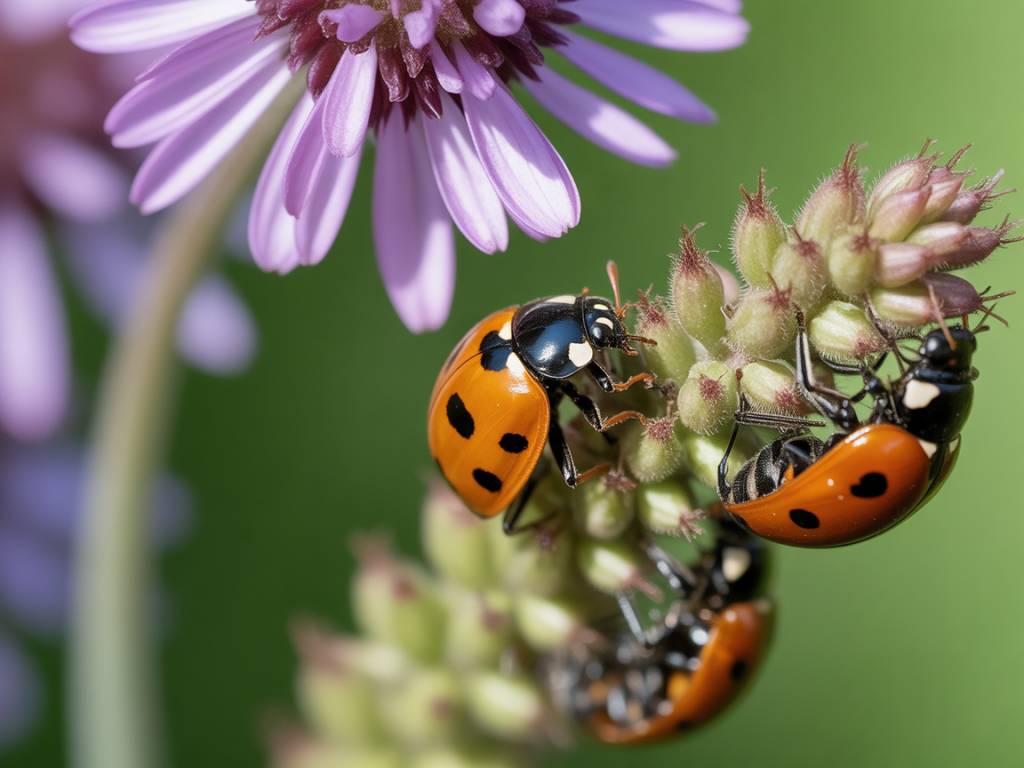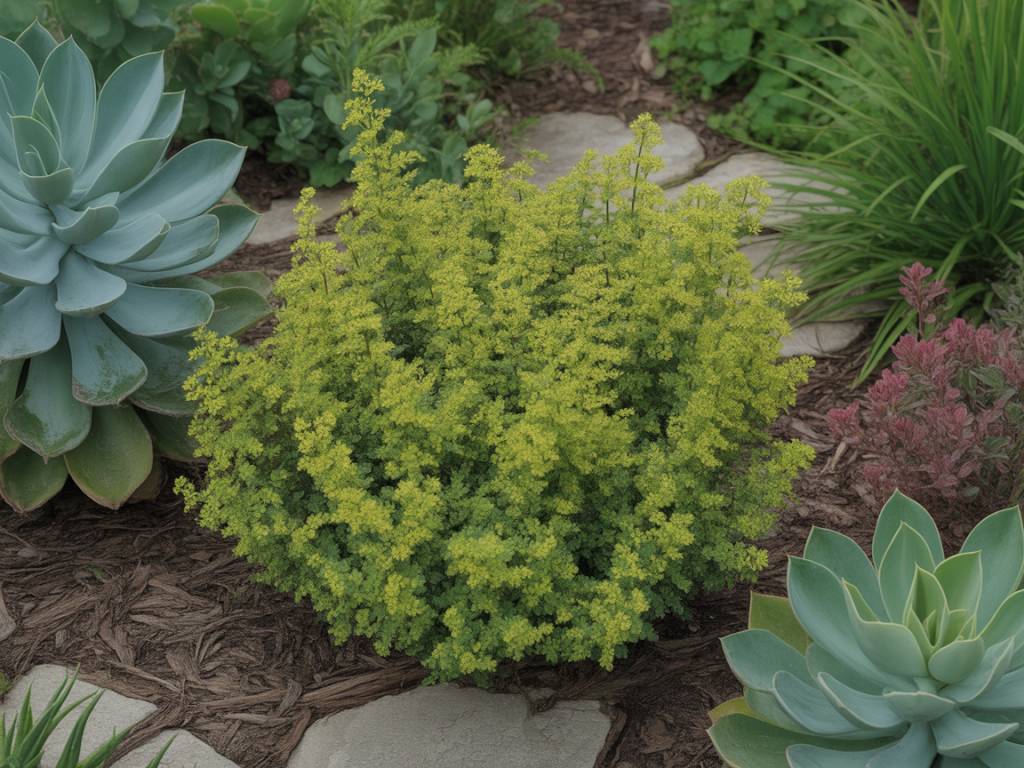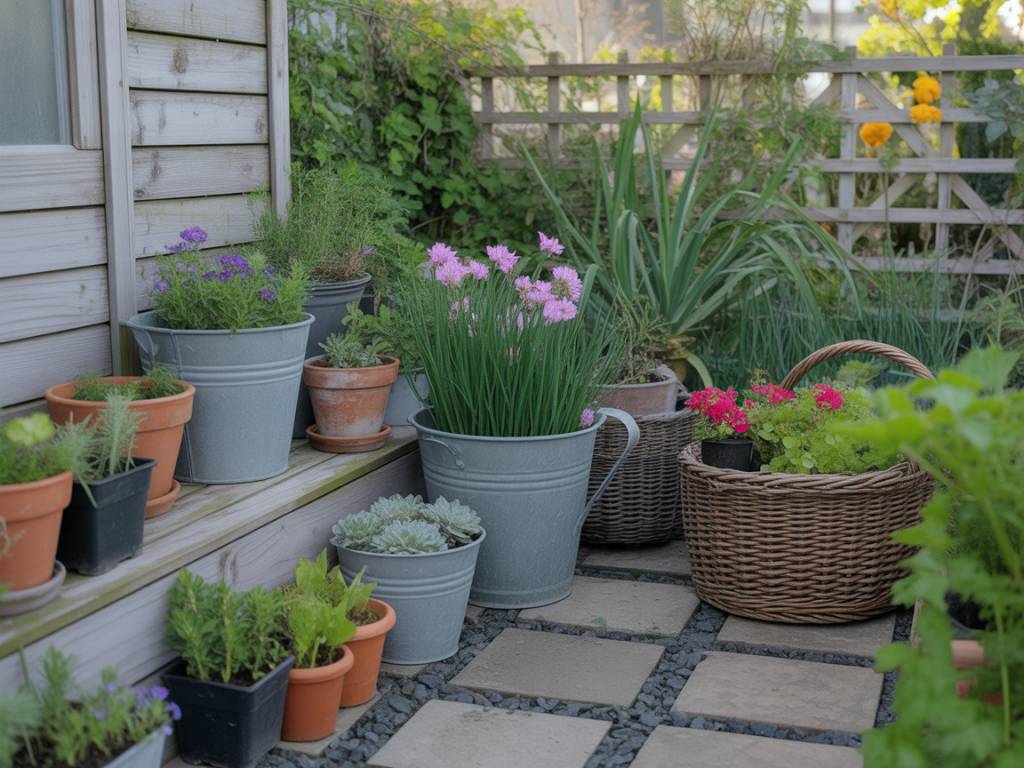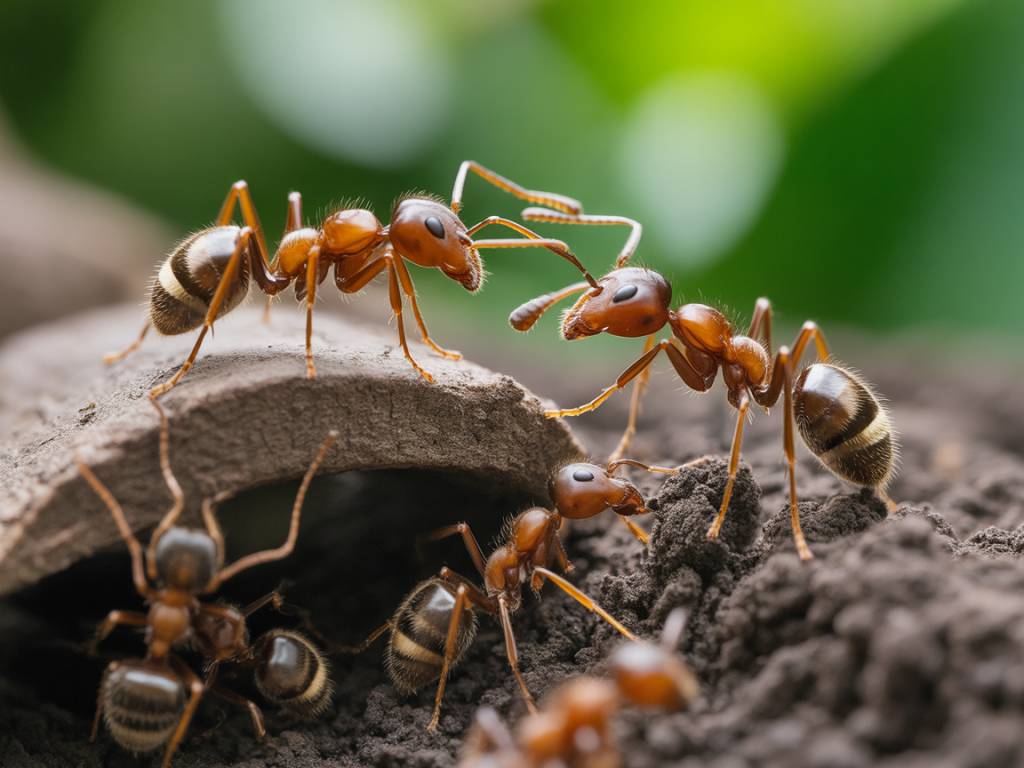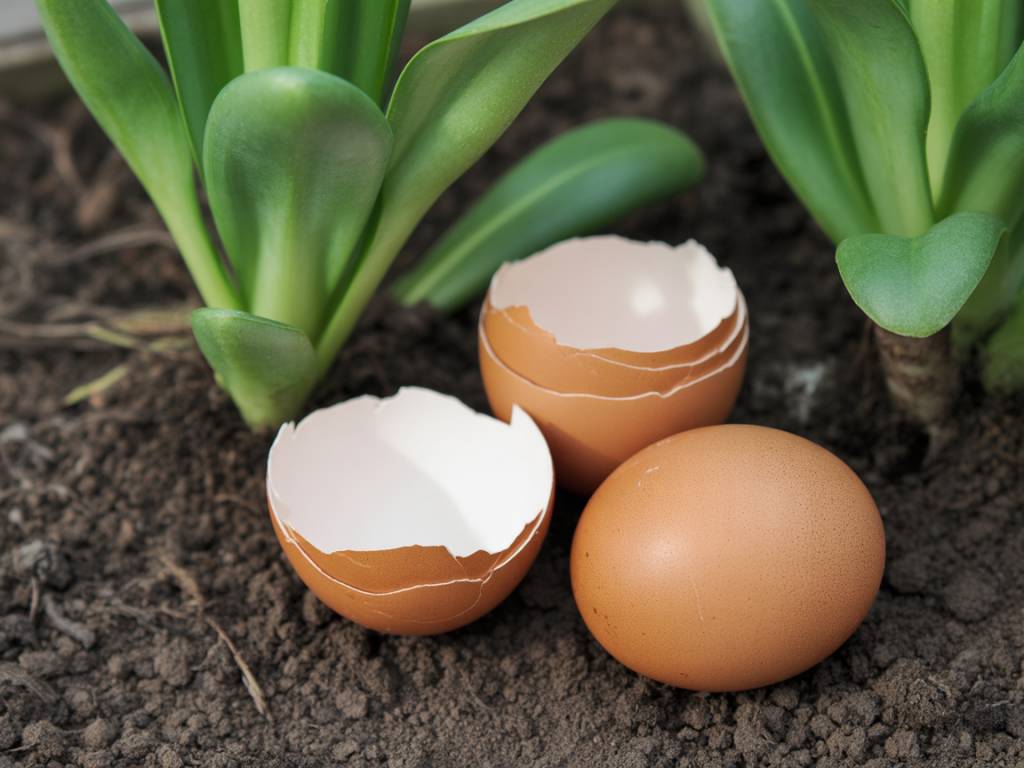If you’ve ever turned a rose leaf and found a cluster of soft, green aphids feasting away, you’ll know that sinking feeling. But before reaching for a spray bottle, imagine another scene: a quiet afternoon, a soft breeze, and tiny red-and-black guardians wandering along your stems, tidying up every last aphid. Inviting ladybugs (ladybirds, as we say in the UK) into your garden is like hiring a tiny, tireless clean-up crew – and they work entirely for free.
Why ladybugs are your garden’s tiny superheroes
Ladybugs aren’t just pretty spots on a leaf. They are among the most efficient natural predators of aphids and several other soft-bodied pests. A single ladybug can eat dozens of aphids a day, and their larvae are even hungrier.
Here’s what they help control:
- Aphids (their favourite feast)
- Whiteflies
- Mealybugs
- Spider mites (especially the young ones)
The beauty of working with ladybugs instead of chemical sprays is simple: they only target the pests, not the rest of your garden’s delicate ecosystem. No lingering residues, no harm to bees, and no risk to pets or children playing on the lawn.
Think of them as your garden’s quiet, gentle security team – present, watchful, and utterly devoted to their next aphid snack.
Getting to know your allies: ladybug life cycle
The more you understand their life cycle, the better you can attract and keep them around. Ladybugs move through four stages:
- Eggs – Tiny, yellow, spindle-shaped clusters on the underside of leaves, often near aphid colonies.
- Larvae – Long, slightly spiky, and often black with orange or yellow patches. They look a bit like tiny alligators… and they are voracious.
- Pupae – Rounded, attached to leaves or stems, where the larvae quietly transform.
- Adults – The familiar spotted beetles we all love.
Most gardeners only notice the adults, and sometimes mistakenly squash the larvae, thinking they’re pests. Once you recognise these “mini dragons”, you’ll treat them like royalty. Ladybug larvae can eat even more aphids than adults, so protecting them is vital.
Create a ladybug-friendly habitat
Ladybugs won’t stay in a garden that’s too tidy, too dry, or too empty of food. Bringing them in is one thing; giving them a home is another. Ask yourself: if you were a tiny beetle, would you settle down here?
They need three main things:
- Food – Aphids and other pests, but also pollen and nectar when prey is scarce.
- Shelter – Places to hide from wind, rain, and predators.
- Moisture – Gentle water sources that won’t drown them.
Start by allowing a little wildness. An ultra-manicured garden, with every leaf removed and every corner swept, offers very little to a ladybug. A slightly messy patch is a haven: a tangle of herbs, some ornamental grasses, maybe a forgotten clump of nettles in a back corner.
Plants that invite ladybugs in
Some plants act like a welcoming sign for ladybugs, offering nectar, pollen, and often a few sacrificial aphids. Mixing these into your borders, containers, or veg patch can make a real difference.
Ladybugs are particularly drawn to flowers with small, accessible blooms arranged in clusters. Consider planting:
- Dill – Let a few plants run to flower; their umbels are like tiny buffets.
- Fennel – Another umbel flower loved by beneficial insects (just watch the self-seeding).
- Coriander (cilantro) – Especially when it bolts and flowers.
- Marigolds (Calendula and Tagetes) – Bright, cheerful, and often hosting small insect life.
- Yarrow (Achillea) – Flat flower heads make a perfect landing pad.
- Cosmos – Light, airy, and adored by pollinators and predators alike.
- Sweet alyssum – Low-growing mats of tiny blossoms ladybugs love to explore.
- Angelica, tansy and feverfew – Old cottage-garden favourites rich in nectar.
In the vegetable patch, ladybugs are especially fond of areas where they know aphids frequently appear: broad beans, roses at the edge of the plot, cabbages, and fruit trees. By interplanting these with nectar-rich flowers, you create a complete menu: pests to eat, nectar to sip.
If you only have a balcony or small courtyard, don’t worry. A few pots with marigolds, dill, or coriander, alongside your roses or tomatoes, can still act as a beacon for patrolling ladybugs in urban areas.
Water and shelter: making them feel at home
Even the bravest little beetle needs a safe place to rest and a sip of water now and then.
To provide gentle water sources:
- Place a shallow saucer with water and a few small stones or pebbles so insects can drink without falling in.
- Mist leaves with a fine spray in the early morning on hot days – ladybugs will drink from the droplets.
For shelter and overwintering sites:
- Leave some fallen leaves in quiet corners rather than clearing everything away.
- Keep a small pile of twigs, bark or hollow stems in a dry spot.
- Consider an “insect hotel” with small holes and crevices.
In winter, ladybugs often gather in groups under loose bark, in sheds, or in dry plant debris. That slightly untidy patch at the back of the garden may be a cosy winter cottage for them, so be gentle with the rake.
The golden rule: avoid harsh chemicals
If you want ladybugs to settle in, the garden must be safe for them. Synthetic pesticides, even those marketed as “insect killers” in general, do not distinguish between aphids and ladybugs.
Try to avoid:
- Broad-spectrum insecticides (sprays or granules)
- Systemic pesticides used on roses and ornamentals
- “Bug killer” mixes applied as a routine, rather than as a last resort
If you absolutely must intervene (for example, a severe outbreak on a cherished plant), choose the gentlest option possible and apply with precision:
- Use a strong jet of water to dislodge aphids from stems and buds.
- Wipe affected leaves with a damp cloth or gloved hand.
- Spot-treat with a soft soap solution early in the morning, avoiding flower heads and only on badly affected plants.
Always check for ladybug adults and larvae before spraying anything, even homemade remedies. If they’re already working for you, step back and let them continue. Nature rarely needs us to rush in like a storm.
Should you buy and release ladybugs?
Many garden centres and online shops offer live ladybugs for release. It sounds magical – open a box and out pour your very own army of helpers. But there are a few important things to consider.
Potential drawbacks:
- Many purchased ladybugs are collected from the wild elsewhere, which can disrupt local populations.
- If you release them into a garden without enough food or shelter, they’ll simply fly away.
- Some species sold may not be native or well-suited to your area’s balance of wildlife.
If you still decide to buy them, try to find a supplier that provides locally appropriate species and follows ethical guidelines. Then, to give them the best chance of staying:
- Release them at dusk, when they’re less likely to fly immediately away.
- Lightly mist the plants first; thirsty ladybugs are more inclined to linger.
- Place them directly on plants where aphid colonies are present, such as roses, beans, or nasturtiums.
However, in most home gardens, it’s often more sustainable – and ultimately more satisfying – to simply create the right habitat and allow the local ladybug population to grow naturally. They are very good at finding a garden that suits them.
Aphid management: working with ladybugs, not against them
It might sound strange, but to attract ladybugs, you actually need a few aphids. If your garden is entirely spotless, there’s no reason for them to move in. The trick is to tolerate a little damage in the short term while the natural predators catch up.
A gentle, step-by-step approach can help:
- Observe first – When you notice aphids, wait a few days. Look for ladybug adults, larvae, or other predators like lacewings and hoverfly larvae.
- Protect beneficial insects – Avoid quick fixes that will wipe out both pests and their predators.
- Sacrificial plants – Allow aphids to gather on a few less-important plants (like nasturtiums) so ladybugs have a reliable food source.
- Prune selectively – If a shoot is absolutely smothered, prune that part off and leave other slightly infested areas as a buffet for ladybugs.
Over time, you’ll notice a pattern: the first warm flush of aphids appears, followed not long after by the red-and-black cavalry. Once you learn to trust that rhythm, the urge to intervene chemically begins to fade.
Season by season with ladybugs
Ladybugs don’t behave the same way all year. Understanding their seasonal rhythms can help you support them more thoughtfully.
Spring
- Overwintering adults emerge, hungry and ready to breed.
- Aphids also wake up, often on roses, fruit trees and beans.
- This is a key time to avoid spraying and to ensure you have early nectar sources such as dandelions, primroses and spring bulbs.
Summer
- Ladybug numbers peak as larvae and new adults appear.
- Flowers like marigolds, yarrow, dill and coriander provide nectar between pest meals.
- Keep water sources topped up, and shade some areas so they have cool retreats in hot weather.
Autumn
- As temperatures drop, adult ladybugs begin seeking sheltered overwintering sites.
- Resist the urge to over-tidy; leave some plant debris and leaf piles.
- If you spot clusters of ladybugs in sheds, greenhouses or window frames, gently leave them be – they’re simply tucking themselves in for the colder months.
Winter
- Most activity stops, but your future aphid-guards are sleeping in quiet corners.
- Avoid disturbing overwintering spots too much; if you must move leaves or logs, do it gently and in stages.
- Plan next year’s ladybug-friendly planting, ready to welcome them back.
Recognising when your garden’s balance is improving
Sometimes the changes are subtle. One year, you’re fighting aphids on every tender shoot; the next, you notice they appear but rarely reach the same overwhelming numbers.
Signs that your ladybug population is settling in:
- You regularly spot adults on roses, herbs and vegetables in spring and summer.
- You start to see larvae – those tiny, dragon-like youngsters – patrolling leaves.
- Aphid colonies look thinned out or patchy, even if you haven’t intervened.
- Other beneficial insects (hoverflies, lacewings, parasitic wasps) appear more often too.
These are quiet victories, the sort you might only notice on a slow wander with a cup of tea in hand. But they mean your garden is starting to function as its own little ecosystem, rather than a series of separate problems to fix.
Simple daily habits to support ladybugs
You don’t need grand projects or complicated schemes. A few small, regular habits make all the difference:
- Take a few minutes each week to turn leaves and really look at what’s living there.
- Resist the reflex to kill any unknown insect – observe first, identify later.
- Leave a corner wild: some grasses, a small log pile, or last year’s hollow stems.
- Add one or two new nectar-rich plants each season to diversify your garden.
- Use water wisely: gentle, shallow sources, not constantly soaked soil.
These small acts, repeated over time, create the kind of space where ladybugs – and many other allies – feel welcome.
One day, perhaps, you’ll lean close to a rosebud and see not just a line of greedy aphids, but a tiny spotted beetle among them, calmly restoring balance. That’s the quiet magic of working with nature rather than against it: the garden begins to look after itself, and you become less of a firefighter and more of a patient, attentive host.

